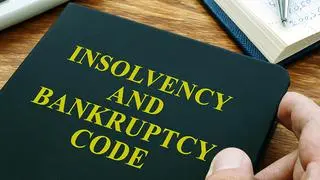IBC stakeholders working in silos having created operational fragmentation, IBBI chief Ravi Mital has pitched for major technological reforms and mooted setting up of a comprehensive IT platform that would end-to-end integrate and digitise all activities in the IBC ecosystem.
This suggestion is significant as it comes nearly seven years after India introduced the Insolvency and Bankruptcy Code (in 2016), which is seen as one of the most important economic reforms undertaken by the country.
Integrated IT platform
Introduction of an integrated IT platform — that would cover all the activities in the IBC ecosystem from debt and default filing to implementation of resolution plan — would improve the outcomes of the insolvency process including minimising delays, increased transparency, increased participation of resolution applicants, maximisation of value etc, Mital said in a communication to IBC stakeholders, seen by businessline.
A comprehensive IT platform will increase the efficiency of the whole system by providing a single source of truth to all players. It will greatly facilitate the NCLT benches to establish facts and decide quickly, with improved outcomes in terms of time and realisations, in line with the vision of Digital India, according to Mital.
Mital highlighted the present challenge of there being little or no technological interactions between the various pillars/ institutions of IBC —NCLT, IBBI, IPAs, MCA, IU and IPs.
The portals/systems of the institutions are all disparate and mostly work in silos with limited exchange of information, Mital said.
There is a need for these systems to be integrated and inter-linked to each other in a structured manner to streamline their interactions, according to IBBI Chief.
Scope of integration
Mital said there is significant scope of integration of the present systems starting from filing of insolvency applications based on record of default generated by the IU, online filing of replies and template- based forms, communication of IPs with the stakeholders, reporting of the process outcomes to the Insolvency and Bankruptcy Board of India (IBBI), inter creditor interactions etc.
Mital added that IPs face great difficulty in obtaining records from the promoters of the Corporate Debtor (CD) and there are disputes raised by both parties about what information has been submitted and what is still pending to be submitted.
If the information is submitted on a single platform, there will be a single source of truth which can be viewed by all parties having access to that information. This platform can facilitate interaction between representatives of class of creditors (like home buyers) and other creditors and allow creditors to watch the progress of their case.
Also if the interactions are conducted on an integrated platform, the information can flow efficiently and quickly throughout the system, said the IBBI chief.
Currently, NCLT has ‘e-courts’ platform for petitioners and respondents to submit their papers online. IBBI portal provides platform for compliance reporting and monitoring of cases and insolvency professionals (IPs). The IBBI website also acts as repository of orders, resources for IPs, data on cases, publications for market and researchers and has information regarding IPs.
On the other hand, Insolvency Professional Agencies (IPAs) have websites and online portals for their IP members for registration and other compliance requirements such as cost and relationship disclosures.
For Corporate Affairs Ministry, the debtor companies incorporated under the Companies Act 2013 are all part of the MCA-21 portal of the MCA.
National E-governance Services Ltd, the only IU registered under the IBC, acts as the repository of all debt and default information provided by the creditors. It offers authentication/verification services for such debt and default.







Comments
Comments have to be in English, and in full sentences. They cannot be abusive or personal. Please abide by our community guidelines for posting your comments.
We have migrated to a new commenting platform. If you are already a registered user of TheHindu Businessline and logged in, you may continue to engage with our articles. If you do not have an account please register and login to post comments. Users can access their older comments by logging into their accounts on Vuukle.